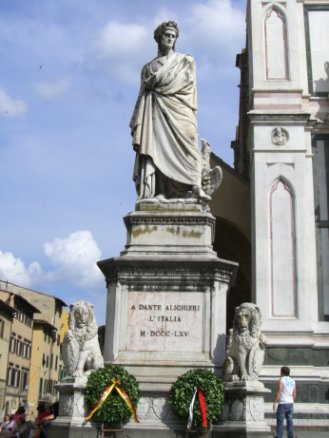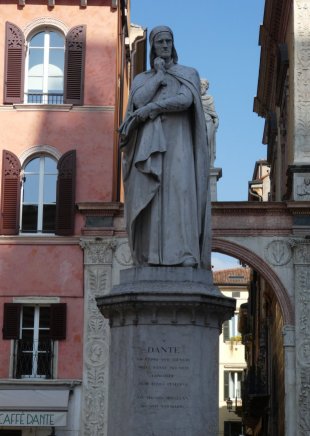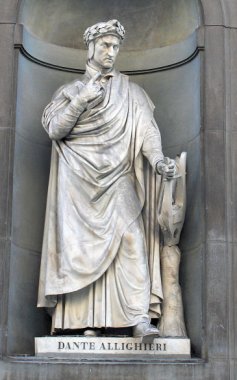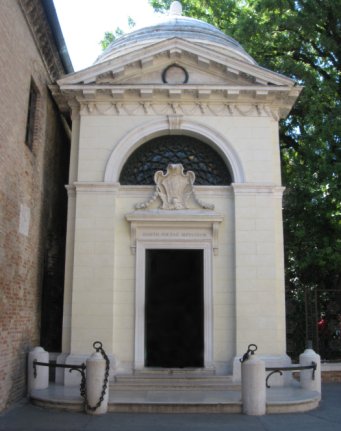By the nineteenth century, Dante's reputation was such that he needed to be celebrated in stone. Below are two fine freestanding statues.
On the left is perhaps the best-known one, located outside the church of Santa Croce in Florence. This was sculpted by Enrico Pazzi in 1865. In the same year, the statue on the right, by Ugo Zannoni, was erected in Verona, near the church of San Fermo. Why here? Dante spent a good part of his exile in Verona. The Alighieri family came from this city, and the family chapel is in San Fermo.




Dante's final monuments.
Wherever Dante was headed for after death, he certainly did not rest in peace on Earth. He died in Ravenna in 1321, and was buried in a Franciscan monastery there. By the middle of the century Florence wanted him back. The Franciscans, not unreasonably, thought that Florence had not done well by Dante and wouldn't give him up. The battle raged on: in the sixteenth century the Franciscans were reduced to hiding his bones in a secret location in case those Florentines stole them. Two popes supported Florence, but even that didn't work. In Ravenna those bones remained, though apparently on more that one occasion the guardians forgot where they had put them. Finally, in 1781 the grand monument shown below left was completed, and Dante was laid to rest at last, inside the Roman Sarcophagus in which he had been originally buried.
Did Florence give up? No. In 1829 a grand (but empty) monument was installed in the church of Santa Croce (another Franciscan location). Here it is, below right.


On to page 4: Dante, Giotto and the Scrovegnis